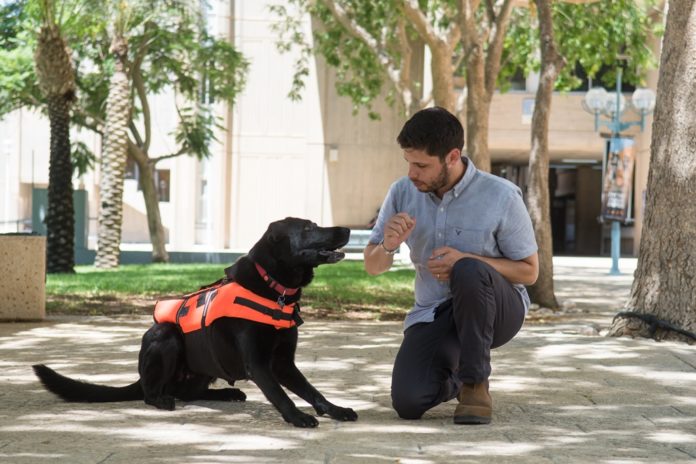By TPS • 10 July, 2019
An interdisciplinary research team at the Ben-Gurion University of the Negev has trained dogs to respond to haptic vibration commands that are transferred through a modified canine vest, deepening the bond between man and his best friend.
Haptics (derived from the Greek phrase “I touch”) technology simulates the senses of touch and motion, which is helpful in a remote operation in which the user is not able to interact with physical objects.
The technology may be useful for delivering remote commands to dogs for use in search and rescue, assisting disabled handlers, and other service animal applications.
“Our research results showed that dogs responded to these vibrotactile cues as well or even better than vocal commands,” said Prof. Amir Shapiro, director of the Robotics Laboratory within BGU’s Department of Mechanical Engineering. “Our current proof-of-concept study shows promising results that open the way toward the use of haptics for human-canine communication.”
The modified mesh canine vest contains four small vibrating motors positioned over the dog’s back and sides that can be used to train or direct dogs to respond to different vibrations sent via wireless remote control.
The handler can elicit different commands by controlling the site and duration of vibrations, responding to several commands such as “spin,” “down,” “to me,” or “backpedal.”
The haptic vest may also be used with existing dog training devices that detect posture and automate reward systems.
“Integrating devices will allow us to further advance the potential of fully or partially autonomic dog training to assess general behavior, responsiveness to commands and the effectiveness of rewarding dogs for desired behavior,” Shapiro explained.
Future research will test the haptic vest technology on different breeds, ages and training experience, and will integrate more advanced devices into search and rescue, military work dog and service dog programs.






